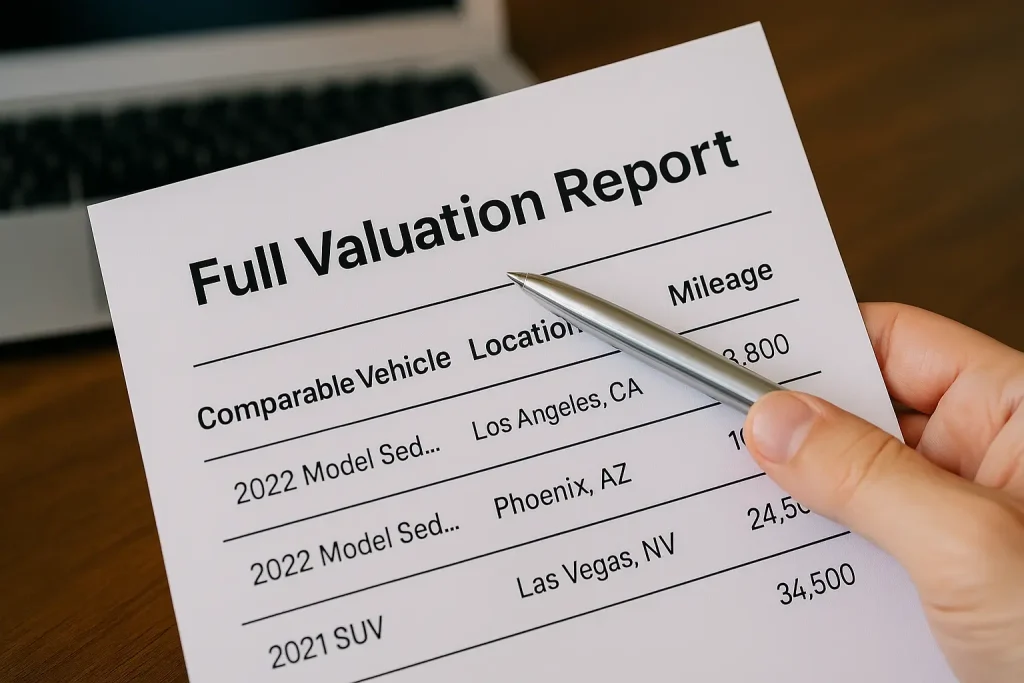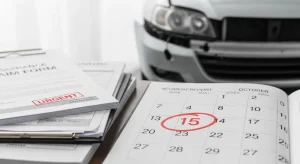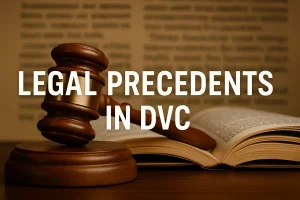When a late-model car is declared a total loss after an accident, the biggest challenge is often the payout. Insurance companies rely on Actual Cash Value (ACV) to determine what they owe you. But for newer vehicles, this calculation is frequently disputed. Why? Because ACV factors in depreciation that may not reflect current market value, especially in volatile conditions. In this article, you’ll learn what ACV is, why late-model cars are particularly affected, how to dispute a low offer, and what steps to take to protect your payout. This guide focuses on helping you manage ACV disputes effectively.
By the end, you’ll understand how to identify a low ACV offer, how insurance companies assess value, and how to respond effectively if your vehicle is undervalued. You’ll also learn how to manage ACV disputes after a total loss on late-model cars—especially when insurers undervalue your car.
What Is Actual Cash Value (ACV)?
Actual Cash Value is what your car is worth at the time of the loss, not what you paid for it or what it would cost to replace. It’s calculated by taking the vehicle’s replacement cost and subtracting depreciation based on age, condition, mileage, and local market demand.
How Insurance Companies Calculate ACV
To determine your ACV, insurance companies:
- Compare your vehicle to similar ones recently sold in your area
- Subtract for mileage, wear, prior damage, or outdated features
- Adjust based on valuation software like CCC or Mitchell
Why Depreciation Hits Late-Model Cars Harder
Late-model cars lose value quickly, even if they’re in excellent condition. That means your ACV payout might be significantly lower than what you still owe or what it would cost to buy another similar car today.
Why ACV Disputes Are Common With Newer Totaled Vehicles
A vehicle that’s only 1–3 years old might still look and run like new, but the insurance company could slash thousands off its ACV due to standard depreciation tables. In fast-changing markets, those tables can be outdated or disconnected from actual prices. That’s why ACV disputes after a total loss on late-model cars are so common.
The Gap Between Book Value and Market Reality
Insurance databases may use outdated listings, wholesale prices, or omit recent market spikes. Consequently, this leads to an undervaluation that doesn’t reflect what your car is actually worth.
Problems With Automated Valuation Tools
Software like CCC One often relies on generic comps and fails to account for local market differences, dealership markups, or recent price trends.
Real-World Example: Undervalued ACV on a 2022 Model
Let’s say you own a 2022 SUV that retails used for $31,000 in your area. After a crash, your insurer offers $25,500. You check listings and find multiple similar vehicles selling above $30,000. Their ACV calculation is off, and you’re left undercompensated.
How Market Conditions Skew ACV for Recent Cars
In high-demand markets or after supply chain disruptions, car values can rise—even for used models. If the software used by insurers hasn’t caught up, your payout will fall short.
What to Do When Your ACV Offer Is Too Low

You don’t have to accept the first offer. You can challenge it—and often with success.
Request the Full Valuation Report
Ask your insurer for the detailed ACV report. Examine the comparable vehicles used, their locations, mileage, features, and sale prices.
Look Up Comparable Listings in Your Area
Find vehicles that match yours on sites like Autotrader, CarGurus, or local dealerships. Save screenshots with dates and prices.
Hire a Licensed Appraiser for a Second Opinion
An independent appraisal can provide stronger evidence to support your claim. A professional report may help you negotiate a higher settlement.
Tips to Strengthen Your ACV Dispute
Rather than giving up, strengthen your case with these tips:
- Document everything: Service history, upgrades, and condition photos
- Highlight unique features: Trim level, technology packages, aftermarket improvements
- Use clear comparisons: Only include vehicles with similar mileage, age, and location
- Submit a formal rebuttal: Write a short summary with attached evidence explaining why the original ACV is incorrect
What If the Insurer Still Refuses to Adjust ACV?
File a Complaint With the State Insurance Department
Each state has a regulatory body for consumer complaints. Filing a report can pressure insurers to re-evaluate a claim.
Consider Mediation or Legal Support
An attorney or mediator experienced in insurance ACV disputes can help escalate your case and improve outcomes.
How GAP Insurance Plays a Role
When GAP Pays Off Your Remaining Loan
If your ACV payout doesn’t cover what you owe on a car loan, GAP insurance can make up the difference—but only if you already have it.
Limits of GAP Insurance for Low ACV Payouts
Even with GAP coverage, you might not receive compensation for your equity loss or actual car value if the insurer undervalues your vehicle.
Conclusion: Don’t Accept the First Offer
Filing an insurance claim for a total loss is stressful enough—don’t let a bad ACV payout add insult to injury. Late-model cars often get hit hardest by automated or outdated valuation methods. Learn how to evaluate your own ACV, collect the right evidence, and challenge your insurer with confidence. Fair compensation isn’t a favor—it’s your right. ACV disputes after a total loss on late-model cars can be tricky, but with preparation, it’s manageable. preparation, it’s manageable.


